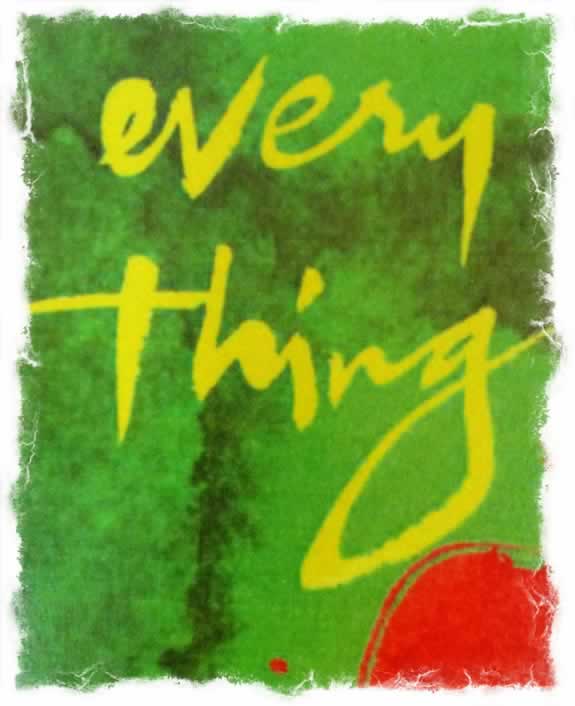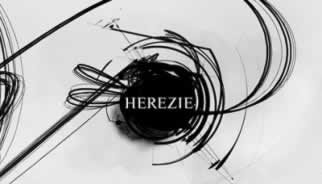Spell-binding and the Magic of Nomenclature
Strategies of Naming

The Naming of Things
THE MYSTICAL ROOTS OF THE GATHERING — AND CALLING — OF NAMES.
What is your name?
I can speak it not.
Name me, and you hold my power.
An ancient principle of vocalization struggles in the subjective empowerment of words — as vessels for improvised ideas and memorable moments — and the named premise of ideals.
I’ve written in the past about the idea of the thing.
And the ancient naming of the thing.
And Iceland.

is something that speaks to a depth of meaning. Centuries back, thing was the matter of a meeting, a deliberation — an entity, an object, trial, or community issue being discussed. Earlier — it was about time; and it might even relate to the “stretching” of time — during the time for a meeting. From the 1600s, it might’ve referenced the “unnameable” — a thingumbob (1751), thingamajig(1824). Or more recently, the hippie parlance: “do your thing.” Or pure style, fashionability, the thing — from 1762.
It was the thing.
Nowadays, it is the thing.
Names — the development of naming solutions as part of a brand program are among the most difficult.
It’s because of one thing — names, as part of something being “read” or spoken are levels of some of the most subjective, the savoring, the study, the read and voiced rendering of a thing, as a name — is personal.
People react viscerally — a name is a name; but in that they are far more important; the name could be, shall be, the heart of the brand — it’s the Google, the Amazon, the Apple; it’s “only a name,” but it’s everything.
Say it, and you’re there; read it, and you know it — you’ve voiced it into being.
(Naming, and the ancient legacy of the word — the nomen, speaks to the mystical naming of an entity; it’s not merely voicing a “title” it is about calling forth the power of that thing — or, the being that resides in that thing. To add to the measure — our idea of etymology comes from that selfsame ancient index — the etymon being the true name of the thing. And in that voicing, the invoking or invocation — that spirit just might come forth.)
Back to earth:
but in that challenge —
the seeming ease of developing a name —
there are numerous burdens of proof in survival.
Rules of the name might be simplistically framed as:
N A M I N G R E F E R E N C E S
• It’s metaphorical — there’s something in the character
that lends to a hidden meaning that resonates deeply to the listener.
Amazon: the river flows.
• It means what is being done —
there’s a mission, a promise, and the name fulfills it.
shakes.
• There is a code, the naming strategy is a “secret language,
which must be shared and identified for others outside the circle.
Red Giant strides.
• The name is combinant — it gathers components
and unites them in a differing context.
VoiceStream: vocalizes.
• It’s part of a numerical coding.
• There is a story, it might be hidden,
but there is a conceptual bridge to legacy.
Apple: gravity drops and rolls.
• A person, connecting to the foundation.
In defining the right strategy for naming —
think:
The architecture of naming —
is this name to be used in the criteria of other, extant names?
Relevance would be a critical concern.
Visualization —
the name should be considered in the context of sight;
how it looks, or shall look, will be an important reference.
Ease —
answering the phone, written and read,
the aural character, this fluency will be an important measure.
Conceptual foundation —
it’s desirable that there is a story,
a concept bridging between the idea of the name and the foundation of its reasoning.
Trendiness —
there are trends that roll in the landscape of naming solutions;
these trends nearly can be tracked as a kind of strata in the history of naming development,
from the directness of International Business Machines
to the seeming oddness of Google.
Unique proposition — the idea of alignment to distinction,
in framing the “onliness” or differing character,
as well as owned uniqueness will support definition in the market.
In a recent AdAge overview, the idea of naming found a new insight in studying the name of agencies. Interestingly, the solutions for naming creative firms is something that is uniquely challenging, given the expectations of not only responding to client needs, and to creating live content in building brands. A note, exploring names offers a string of backstories:
Odopod (and Godzilla)
“When we started Odopod we wanted to create a company with the ideas and resources to execute big and the metabolism and culture to behave small,” said Founder and Creative Director Tim Barber. “So when it came to naming the company we combined two pieces that got at this big/small idea. Odo — this was Godzilla’s island, the island where he had been a legend for generations and where he first came ashore. We loved the bigness and total domination of Godzilla. And Pod [because] at the same time we liked that we were a compact team that grew ideas, like a pod — the compact, protective enclosure of a seed. For the record, Steve Jobs stole our thunder a year later when the iPod launched.”
Zaaz (a Seattle favorite, and friends of Girvin)
“We wanted a name that wasn’t an acronym or the founders’ names,” said Shane Atchison, founder and CEO of Zaaz. “So we came up with Zaaz, mainly because it was short, succinct, available. Also it’s a palindrome. We define it as something new, because that’s something we aspire to do every day. There’s no secret meaning behind it, just a made up word.”
Critical Mass (the scientific mix)
“In science, a ‘critical mass’ is defined as an amount necessary to achieve a significant effect,” explained Critical Mass CEO Dianne Wilkins. “It’s that perfect mix of ingredients needed to start a chain reaction. In terms of the brand, our Critical Mass is a unique mix of people, ideas and results — it’s the combination of these things coming together as a catalyst for extraordinary experiences. The name really expresses something that is at the core of what we do — we have an unrelenting desire to create experiences that make an impact on our clients’ brands, their businesses and their customers.”
Rokkan (the gut instinct)
Said Rokkan CEO John Noe: “It’s Japanese for the ‘sixth sense.’ Two of us are Korean and one is Chinese. We just liked the way it looked and sounded. … And thought the meaning was relevant. … As much as we try to be thoughtful about strategy and process, we ultimately just go with our gut on things.”

Herezie (courage endures)
Andrea Stillacci, who launched Paris agency Herezie at last year’s Cannes Lions festival, said: “We always liked the Heretics. Their courage. Their faith. Their fearless challenge to dogmas and orthodoxy.” Mr. Stillacci said “heresy” is derived from a Greek word meaning “power to change,” and that also appealed to him and his business partner, Luc Wise. “If you think about it, what other name could better fit the idea of launching an independent agency, in France, right in the middle of the financial crisis?” said Mr. Stillacci. (Cheil Worldwide holds a minority stake.) These references come from Kunur Patel and Laurel Wentz.
While some of these names are conceptually strong, a question might be to longevity — still many of them flourish. The added question might be the alignment of strategy to long-term staying power; agencies come and go; and few have the strength to endure for decades; thus the notion of the creative impulse in naming — here today, energetically vital; and tomorrow — something new.
Just like the emergence of the new ideal.
tim | NYC GIRVIN
—-
INNOVATION TEAM STRATEGIES
Girvin Cloudmind | http://bit.ly/eToSYp
the reels:http://www.youtube.com/user/GIRVIN888